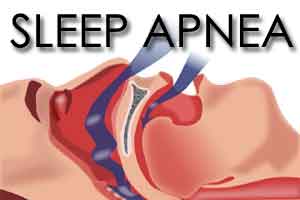- Home
- Editorial
- News
- Practice Guidelines
- Anesthesiology Guidelines
- Cancer Guidelines
- Cardiac Sciences Guidelines
- Critical Care Guidelines
- Dentistry Guidelines
- Dermatology Guidelines
- Diabetes and Endo Guidelines
- Diagnostics Guidelines
- ENT Guidelines
- Featured Practice Guidelines
- Gastroenterology Guidelines
- Geriatrics Guidelines
- Medicine Guidelines
- Nephrology Guidelines
- Neurosciences Guidelines
- Obs and Gynae Guidelines
- Ophthalmology Guidelines
- Orthopaedics Guidelines
- Paediatrics Guidelines
- Psychiatry Guidelines
- Pulmonology Guidelines
- Radiology Guidelines
- Surgery Guidelines
- Urology Guidelines
Sleep Medicine Academy releases position statement on home Apnea Testing

A new position statement published by the American Academy of Sleep Medicine (AASM) describes the appropriate clinical use of a home sleep apnea test (HSAT). An HSAT is a medical assessment that can be ordered by a physician for the diagnosis of obstructive sleep apnea (OSA) in select adults. Properly diagnosing and treating OSA in adults is of crucial health importance. When left untreated, OSA is a potentially lethal disease that can increase the risk of serious health complications such as hypertension, heart failure, type 2 diabetes, and stroke.
“A home sleep apnea test provides valuable information for the diagnostic assessment of certain patients with suspected obstructive sleep apnea,” said AASM President Dr. Ilene Rosen. “However, the test is only one component of a comprehensive sleep evaluation, and it is important for a board-certified sleep medicine physician to be involved in reviewing and interpreting the raw data from the device.”
The statement, which is published in the Oct. 15 issue of the Journal of Clinical Sleep Medicine, comprises the following positions:
- Only a physician can diagnose medical conditions such as OSA and primary snoring.
- The need for, and appropriateness of, an HSAT must be based on the patient’s medical history and a face-to-face examination by a physician, either in person or via telemedicine.
- An HSAT is a medical assessment that must be ordered by a physician to diagnose OSA or evaluate treatment efficacy.
- An HSAT should not be used for general screening of asymptomatic populations.
- Diagnosis, assessment of treatment efficacy, and treatment decisions must not be based solely on automatically scored HSAT data, which could lead to sub-optimal care that jeopardizes patient health and safety.
- The raw data from the HSAT device must be reviewed and interpreted by a physician who is either board-certified in sleep medicine or overseen by a board-certified sleep medicine physician.
Common symptoms of OSA include loud snoring, choking or gasping during sleep, and daytime sleepiness. According to a clinical practice guideline published earlier in the year by the AASM, polysomnography is the standard diagnostic test for the diagnosis of OSA in adult patients in whom there is a concern for OSA based on a comprehensive sleep evaluation. However, a home sleep apnea test with a technically adequate device can be used for the diagnosis of OSA in uncomplicated adult patients presenting with signs and symptoms that indicate an increased risk of moderate to severe OSA.
AASM position paper states that the use of an HSAT is not recommended for the diagnosis of OSA in children. An objective evaluation of the available literature found that an HSAT may be technically feasible in carefully controlled conditions when electrodes are placed on a child by a trained clinician. However, there is insufficient evidence to support the efficacy of an HSAT when used at home to assess a child’s breathing during sleep.
home sleep apnea testJournal of Clinical Sleep MedicineObstructive Sleep Apneasleep ApneaSleep Medicine AcademyType-2 diabetes
Next Story
NO DATA FOUND

Disclaimer: This site is primarily intended for healthcare professionals. Any content/information on this website does not replace the advice of medical and/or health professionals and should not be construed as medical/diagnostic advice/endorsement or prescription. Use of this site is subject to our terms of use, privacy policy, advertisement policy. © 2020 Minerva Medical Treatment Pvt Ltd